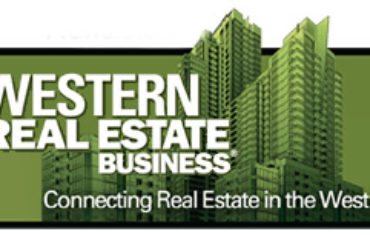A Creative Affordable Real Estate Solution for Owning Commercial Real Estate
As the economy changes, your company may still need new and/or additional facilities to not only upgrade systems and equipment, but for future expansion. In some markets, vacancy rates are in the single digits, and you may need to turn to build-to-suit facilities to accommodate expansion due to the lack of available space.
The ultimate cost to your company with build-to-suit facilities is a function of the price of land, cost of construction, and the cost of money available to you or your developer. In many cases, these costs are in excess of current market rents for existing product, and although it allows your company to expand, there is additional financial commitment required.
The Saywitz Company, a national commercial real estate brokerage and consulting firm based in Orange County, CA, was faced with several scenarios for clients looking to expand throughout California. Many of the markets in California, like others around the country, are extremely landlord oriented and available space is scarce while rental rates are climbing.
We’ve implemented a concept to accommodate our client’s expansion plans and control real estate costs called the Purchase Partial Lease Back (PPLB). The PPLB incorporates the concepts of build-to-suit, purchase, and leasing scenarios all into one transaction.
The dynamics of the marketplace, financial stability of your company, future projections for the market, and your company’s growth must all be considered in this transaction. We’re currently using the PPLB throughout California, and have recently employed it for our own real estate requirements and growth for our new headquarters office in Newport Beach, CA.The basic concept of the transaction is that you either purchase or construct a new facility to accommodate your company’s requirements. This new facility will be larger in size than your company’s immediate requirements in preparation for future company growth. Your company will then own the facility and lease back the portion of the facility you do not need immediately. The rental income that will be generated from your new tenant will offset in part, or in its entirety, your financial obligations for the new facility. This allows the flexibility to gradually grow into the facility while increasing your bottom line by reducing overall real estate costs.
The benefits of this transaction are:
Ownership, rather than renting — The benefits of ownership provide tax incentives to the principals of the company, and projected appreciation of the asset as a whole provides additional upside to the company.
Flexibility to control future growth — Your company can rent out the excess space for short- or long-term leasing to coincide with its future growth plans and gradually ease into the overall size of the building.
Bottom line cost savings — When financial analysis are performed on a build-to-suit, lease transaction versus the the PPLB, the overall expense can range from 30%-100% in bottom-line cost savings to your company. Additionally, the lease that is signed with the tenant for the excess space in the building will typically have annual increases and your mortgage will stay fixed for the length of the mortgage. In time, your monthly expense decreases, as rental income increases.
The risks of PPLB are:
Future down-turn in the real estate market — Although we are certainly on the up-cycle of the real estate market, should it take a downward turn, you may be left with an asset worth less than what you paid. However, as long as you use the facility, the cost will be cheaper than renting.
Ownership responsibilities — You are responsible for maintaining the facility and coordinating any issues with your own tenants. With the PPLB, your company is, in effect, the landlord. However, these risks can be alleviated by hiring a third party manager at a nominal cost.
Risk of finding a tenant — There are additional costs that may be incurred to you by having a portion of the facility remaining vacant for a period of time after construction or acquisition. This may alter the financial analysis and require additional up-front cost to be incurred until a tenant is found. However, in the typical case of the PPLB, this scenario requires a build-to-suit with new construction. In this case, your company will have a minimum of 6 to 12 months to market the property prior to the completion of the construction. Assuming this transaction is being structured in a market that has decreasing vacancies and increasing rental rates,there should be no difficulty in finding a tenant for new construction prior to the completion of the building.
As in any real estate transaction, there are risks and rewards. The risks with the PPLB are future stability of the real estate market, and the future business projections of your company. The rewards, however, will increase your bottom line performance significantly and control your future growth.As the pioneer of this new concept, The Saywitz Company has taken its own advice and has purchased a building in Newport Beach, CA for its headquarters. The firm implemented the PPLB to alleviate all costs associated with real estate. In effect, the company eliminated the rent line item on its balance sheet and acquired an asset in the process. We are currently negotiating several transactions in excess of 1,000,000 square feet employing this concept.
If your company fits the criteria for this transaction and employs a solid set of investment analysis combined with future growth projections, you will be able to either acquire or construct a new facility allowing better efficiency and use of space, along with technological change. You will be able to place an asset on your balance sheets rather than a rent expense and reduce your overall real estate costs significantly.
Barry Saywitz is president of The Saywitz Company, a National Real Estate Brokerage & Consulting Firm and is also chairman of The CORE Network, a Worldwide Organization of Real Estate Companies. For more information, please contact The Saywitz Company at 949-930-7500.


